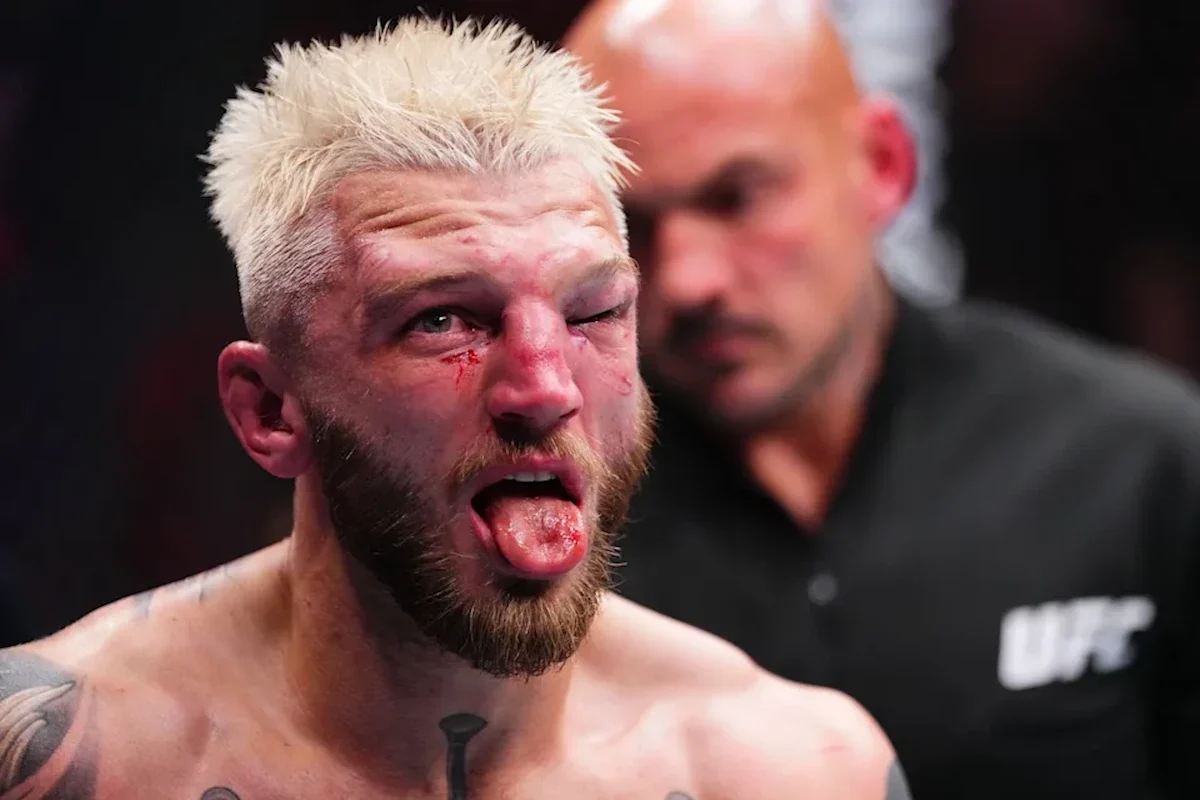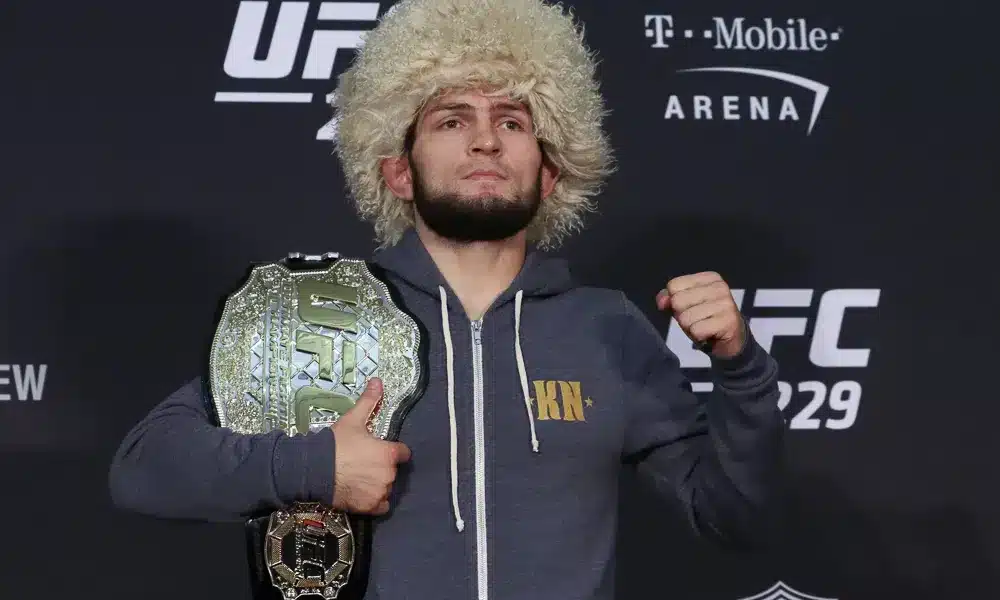Ringside Report Network continues its commitment as the Combat Sports Authority with this in-depth analysis of the safety failures threatening the sport we cover.
The weekend of November 22-23, 2025, will go down as one of the darkest in modern combat sports history. Fans tuned in expecting competition. They got a brutal reminder of the razor-thin line between athletic entertainment and life-threatening danger—and Isaac Johnson’s death ripped the curtain off a crisis that’s been festering for years.
Johnson, a 30-year-old mixed martial artist, died following complications from his Eagle FC bout. Hours later, at UFC Qatar inside ABHA Arena in Doha, three fighters were transported to a local hospital following their violent bouts. The concentration of medical emergencies in a single weekend forced the entire combat sports community to face uncomfortable truths about safety protocols and regulatory oversight.
Let’s be clear: Johnson’s death wasn’t an isolated incident. It was the predictable result of systemic failures that have plagued regional MMA for decades. Inadequate medical oversight. Undertrained referees. Toothless commission regulations. The infrastructure meant to protect fighters has crumbled under the weight of profit margins and regulatory neglect.

The Weekend That Changed Everything
Johnson compiled a respectable professional record before suffering severe complications during his bout that proved fatal despite immediate medical intervention. The specific details remain under investigation, but the tragedy has reignited debates about pre-fight medical screening, referee training, and post-fight care protocols.
The timing made it worse. As news of Johnson’s condition spread through the MMA community, UFC Qatar delivered its own sobering reminder of combat sports’ inherent dangers.
UFC officials confirmed to MMAmania.com that headliner Dan Hooker, middleweight-turned-welterweight Jack Hermansson, and top 15-ranked flyweight contender Tagir Ulanbekov were all transported to a local hospital for precautionary reasons.
Hooker (24-13) required a precautionary CT scan of his head and face after absorbing a two-round beatdown that ended in a second-round submission loss to Arman Tsarukyan. The Hangman” entered the bout following a 15-month layoff caused by multiple hand fractures, and while the loss snapped his three-fight win streak, expect UFC to reward his willingness to step up against Tsarukyan when no one else would.
Hermansson (24-10) also underwent a precautionary CT scan following a brutal knockout loss to Myktybek Orolbai. The setback comes just five months after suffering an even worse knockout at UFC 317, courtesy of Gregory Rodrigues. “The Joker” is now riding a two-fight skid at 1-3 in his last four, raising serious questions about whether he stays at welterweight or returns to middleweight.
Ulanbekov (17-3) was sent to the hospital for CT scans of his head, face, and leg after a submission defeat to a returning Kyoji Horiguchi. The loss snapped his four-fight win streak and likely cost him his No. 11 flyweight ranking—a spot Horiguchi may now claim.
All three fighters have since been released from the hospital, though scan results remain unknown.
Here’s what’s important to understand: UFC transporting fighters for precautionary CT scans represents the system working as intended. This is standard protocol for a major promotion—especially after three-round battles full of damage or nasty knockouts. The UFC has neurologists, cardiologists, and immediate access to advanced imaging. They take fighter safety seriously.
The question this weekend forces us to confront: Would Isaac Johnson have received the same level of care at his regional event?

The Great Divide: Major Promotions vs. Regional Circuit
The answer isn’t simple. While the UFC and major promotions have implemented comprehensive safety protocols, the regional circuit—where thousands of fighters cut their teeth—operates in a regulatory Wild West that’s claiming lives.
The disparities are staggering.
Major MMA promotions provide comprehensive pre-fight medical examinations, including neurological assessments, blood tests, and imaging. Ringside physicians continuously monitor fights and have the authority to stop competition at any sign of severe distress. Post-fight medical suspensions are mandatory following knockouts or significant head strikes. UFC events feature neurologists, cardiologists, and immediate access to advanced imaging—precisely the kind of resources that led to Hooker, Hermansson, and Ulanbekov being evaluated within hours of their bouts.
Regional shows? Many operate with a single ringside physician who may lack specialized training in combat sports. Some events require EMTs or volunteers with basic first-aid certification. Multiple regional promotions have been caught operating without proper medical staff, relying on local emergency services that may be minutes away rather than seconds.
When a fighter suffers traumatic brain injury, those minutes determine whether they recover or become another statistic.
Eagle FC, founded by former UFC lightweight champion Khabib Nurmagomedov, has generally maintained professional standards but operates across international markets with varying regulatory frameworks. The circumstances surrounding Johnson’s fight will undergo intense scrutiny to determine whether additional safety measures might have prevented this tragedy.
The Referee Training Crisis
The officiating problem runs equally deep.
Major promotions employ referees who undergo rigorous certification, continuous education, and regular performance evaluations. Regional circuits often use officials with minimal training—sometimes learning on the job at events where lives hang in the balance.
A properly trained referee recognizes subtle signs of neurological distress: the glassy stare, delayed responses, and compromised motor function. They understand when to stop a fight before permanent damage occurs. Undertrained officials miss these critical moments, allowing contests to continue when fighter safety demands immediate intervention.
Consider Hermansson’s situation: two brutal knockout losses in five months. A properly functioning system tracks this pattern and mandates extended medical suspensions. At the UFC level, these protocols exist. At the regional level, a fighter with Hermansson’s recent history might be cleared to compete far sooner than advisable.
The sport needs more frequent and comprehensive neurological testing, including advanced brain imaging, before and after fights. Longer mandatory rest periods between bouts, particularly following head trauma. Enhanced referee training programs ensure more consistent intervention when fighters are in distress.
Commission Oversight: The Damning Failure
Here’s where it gets ugly.
Athletic commissions in Nevada, California, and New York maintain rigorous standards. The Qatar Sports Authority, which oversees UFC’s Doha event, ensured that proper medical infrastructure was in place. Smaller jurisdictions often lack resources for comprehensive oversight. This patchwork system means fighter safety varies dramatically based on geography and promotional organization.
Some states lack dedicated combat sports commissions entirely, delegating oversight to understaffed departments with competing priorities. A fighter might compete under strict medical protocols in one state, then travel to another where pre-fight medicals consist of checking a pulse and little else. The same athlete requiring comprehensive neurological clearance in Nevada might fight with minimal screening elsewhere.
Boxing, despite its own issues, maintains more consistent safety standards across competition levels. Boxing commissions generally require similar medical protocols regardless of venue size or fighter prominence. MMA’s regulatory fragmentation creates dangerous disparities that boxing largely avoids.
Follow the Money
The economic forces driving these failures warrant examination.
Regional promotions operate on razor-thin margins, viewing comprehensive safety measures as cost-prohibitive rather than essential. Medical staff, proper equipment, and thorough pre-fight screening represent significant expenses that many promoters treat as optional luxuries.
This cost-cutting mentality creates perverse incentives. Promoters shop for jurisdictions with lax oversight, seeking locations where they can operate cheaply rather than safely. Fighters, desperate for opportunities and paychecks, accept compromised conditions because alternatives are scarce.
The sport’s pay structure, particularly for lower-level fighters, creates incentives to fight frequently and potentially conceal injuries or health issues. Johnson’s death underscores how these economic realities produce fatal consequences.
Regional MMA serves as the proving ground where athletes develop skills and build records necessary for consideration by major promotions. This creates an ecosystem where fighters must accept substandard safety conditions to advance their careers—a Faustian bargain that shouldn’t exist in professional sports.
The Path Forward
Reform requires coordinated action across multiple fronts.
Uniform Medical Standards: Every MMA event, regardless of size or location, must require qualified ringside physicians with combat sports training, immediate access to neurological assessment tools, and predetermined protocols for handling traumatic injuries. If UFC can transport three fighters for precautionary CT scans in Qatar, regional promotions should be able to provide comparable care domestically.
Referee Certification Standardization: A national registry of qualified officials with mandatory continuing education and regular performance evaluations would ensure consistent standards across all jurisdictions. No fighter should face an undertrained referee because they’re competing on a regional card.
Commission Reform: States without dedicated combat sports oversight should meet minimum regulatory standards or forfeit the right to sanction MMA events. Federal legislation establishing baseline safety requirements could eliminate the race-to-the-bottom regulatory environment.
Insurance-Driven Compliance: Mandatory insurance policies with premiums tied to safety compliance would create financial incentives for comprehensive protective measures. Events cutting corners on safety would face higher costs, making proper protocols economically advantageous.
Technology Integration: Portable CT scanners, rapid neurological assessment tools, and real-time health-monitoring systems are becoming increasingly affordable. These technologies could bridge the gap between major promotion resources and regional event capabilities.
A Cultural Reckoning
The MMA community must also examine its cultural relationship with fighter safety. The sport’s warrior ethos sometimes treats safety concerns as a weakness rather than a source of wisdom. That mentality must evolve. Protecting fighters enhances rather than diminishes the sport’s integrity.
Some defend current practices by pointing to MMA’s overall safety record compared to boxing, noting the sport’s multiple disciplines and submission options provide alternatives to prolonged striking exchanges. They argue that additional restrictions could fundamentally alter competition without meaningfully improving safety.
Those arguments ring hollow when a 30-year-old fighter dies, and three more are hospitalized in a single weekend.
The UFC Qatar hospitalizations, while concerning, actually demonstrate what proper safety protocols look like in action. Hooker, Hermansson, and Ulanbekov received immediate evaluation and precautionary imaging. They were transported to hospitals, scanned, monitored, and released. The system worked.
Isaac Johnson deserved that same system. Every fighter does.
The Choice Before Us
Isaac Johnson’s death should serve as MMA’s watershed moment—the tragedy that finally forces comprehensive reform. But change requires more than grief and good intentions. It demands concrete action from promoters, regulators, and the broader MMA community.
The regional circuit will always be MMA’s developmental league. It doesn’t have to be its killing field.
With proper medical protocols, trained officials, and meaningful oversight, regional MMA can provide opportunities for aspiring fighters without compromising their lives. The question isn’t whether MMA can afford these changes—it’s whether the sport can afford not to make them.
Every day these systemic failures persist, another fighter enters the cage under compromised safety conditions. The next Isaac Johnson might be competing tonight, trusting a system that’s already failed too many warriors.
Johnson’s death is a tragedy extending far beyond sport, affecting his family, friends, and everyone who knew him as more than a fighter. As the combat sports community processes this devastating weekend, the focus must remain on learning from these incidents to prevent future tragedies.
The fine line between entertainment and danger in combat sports will always exist. This weekend reminded us that crossing it carries irreversible consequences, underscoring the ongoing need to refine safety protocols for the sport’s future.
MMA’s dark side has been exposed.
Now the sport must choose between meaningful reform and continued tragedy.
Ringside Report Network remains committed to covering combat sports with the depth, analysis, and accountability our audience deserves. When fighter safety is at stake, we don’t look away—we dig deeper.

